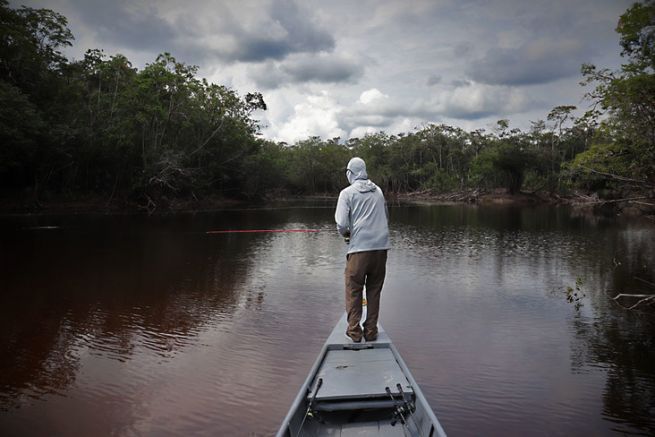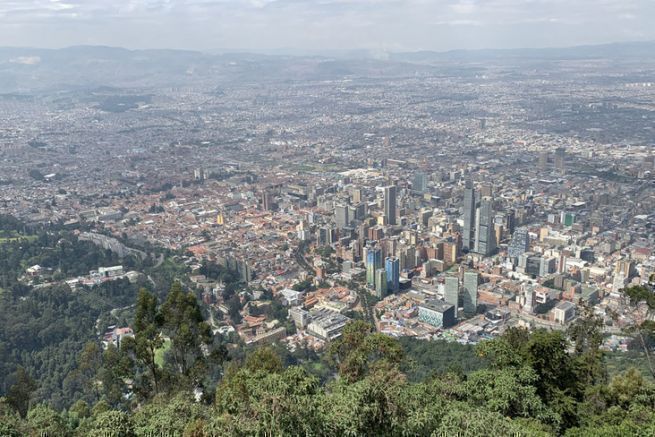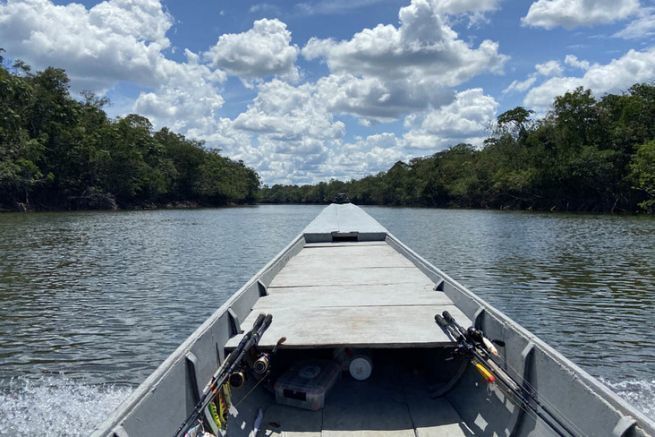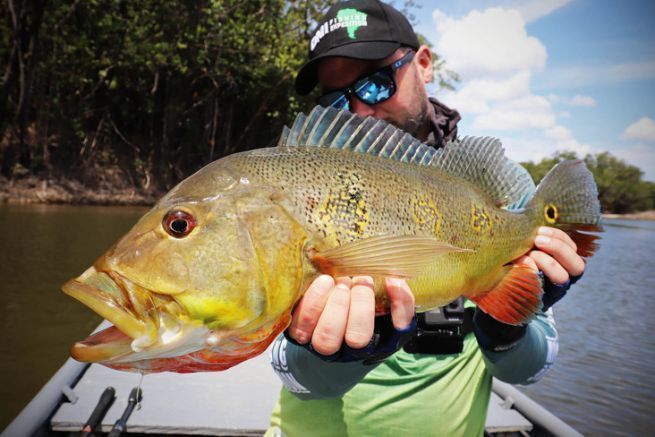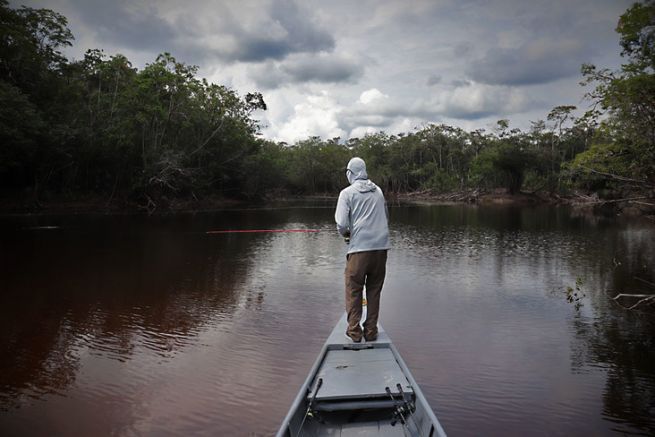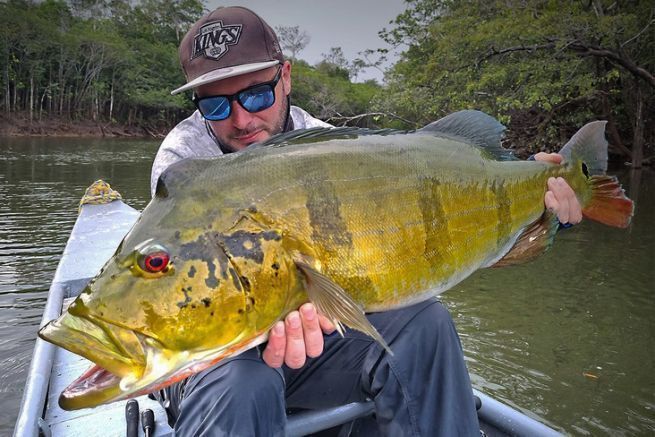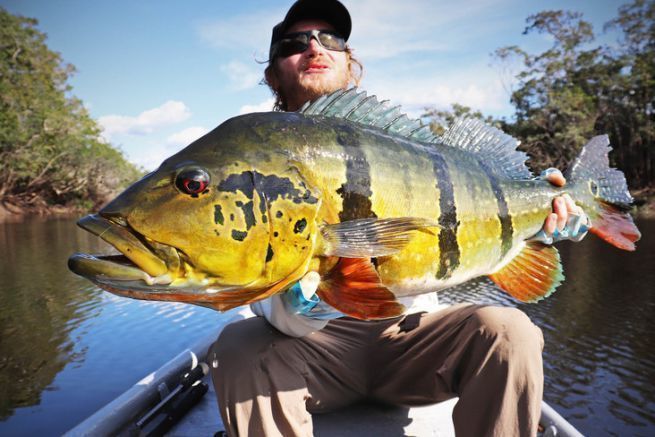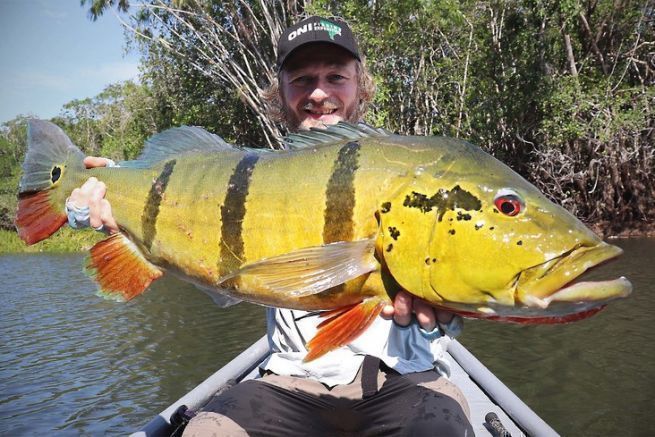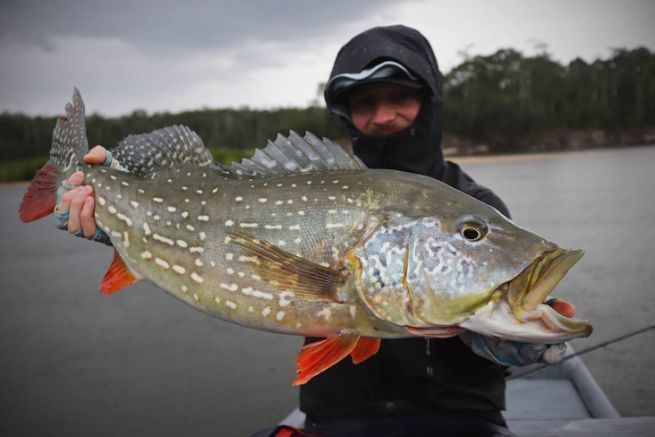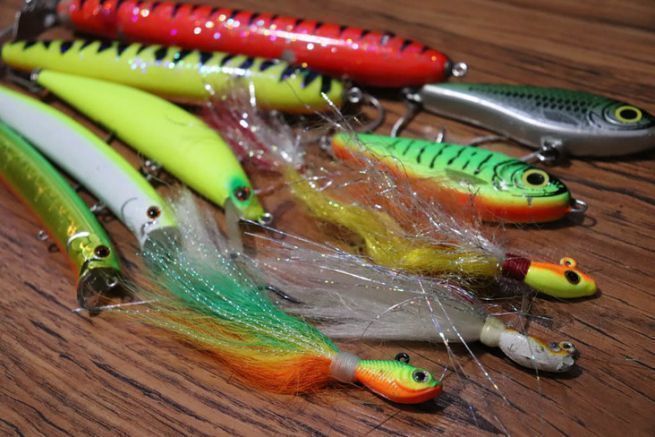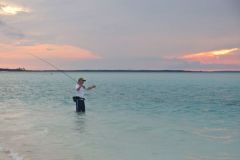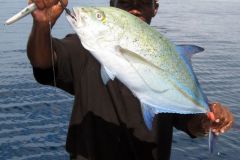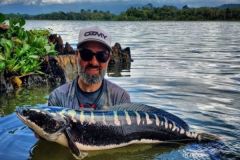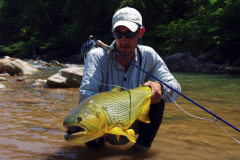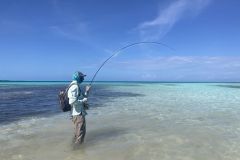Fishing in the lagoons
The principle of peacock bass fishing is to explore the lagoons, because big fish tend to live there, as long as the water level is sufficient. Our guide takes us from lagoon to lagoon, and even on the big lagoons. He takes us deep into the lagoons to explore them completely.
It is quite destabilizing, because the deeper you go into the lagoons, the less the density of fish seems to be present. It is therefore necessary to remain concentrated and not to lose patience, because a big peacock bass can come out at any moment.
Fishing the edges
The edges of the lagoon are mainly populated by small peacock bass, the butterfly. The butterfly are reactive on very jerky animations, the principle is to throw as close as possible to the edge and to animate energetically the lure while bringing it back.
Be careful, this does not mean that there are never any big subjects on the edge, they are really worth exploring, because big ones are hiding there too. The best places to find butterflies are in submerged trees and vegetated areas, not too far from the main river bed.
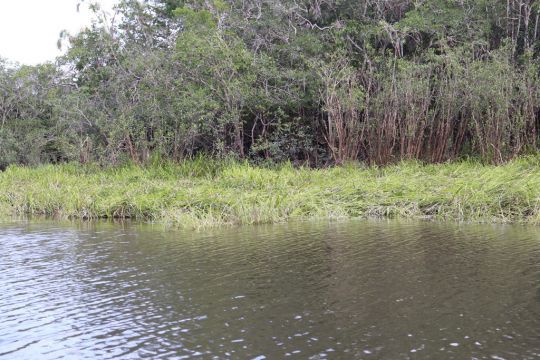
The environment of the lagoons
The environment of the lagoons, as for him, is rather populated by the big tememsis. The tememsis is a territorial fish, and very often, only one couple lives in a lagoon. To capture these fish, it is necessary to throw in the middle of the lagoon and to bring back in linear, by respecting an alternative of the place where we throw, to cover all the zone.
The taking of small tememsis is often a sign that the big ones are not far away, because in fact, it is the offspring of these big ones, on which they keep a protective eye.
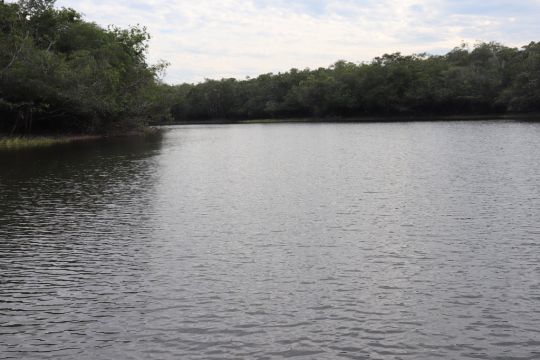
The sandbanks
Finally, an area that is really not to be underestimated, is the area of the sandbanks along the river. During the navigation between the lagoons, we saw several times very big fish.
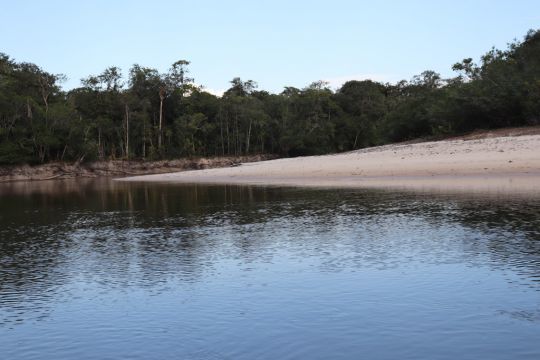
The small ones, sign that a big fish is not far!
During this second day of fishing, after only 5 minutes of fishing, a very big fish starts to follow my lure, a small jerkbait, only to push it away by making me a barely perceptible touch.
This behavior that the peacock has to repel lures, or rather any intruder, is that it protects its offspring. Indeed, the maternal instinct of this species is very strong and it protects its young during their first two years. Therefore, if we fish for young of about 30 centimeters, we can hope that the parents are not far away and it is good to insist on the area. This is also why, when you bring back a small peacock bass, it is not uncommon to see one or two big ones following.
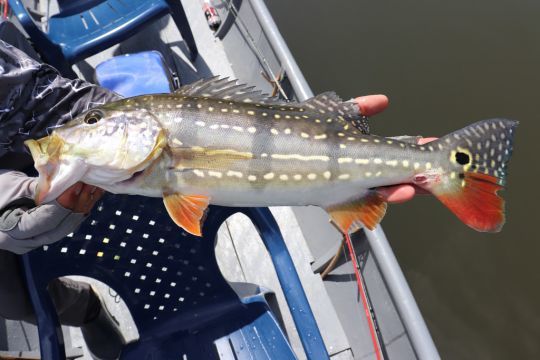
Debriefing of the day
For this day, the report remains the same, still no very big fish on the counter. A few fish of 15 Lbs have still visited some fishermen of the group! Seeing that the big ones are still there is motivating, there is no doubt about the stock of this river. The population of peacock bass seems incredible, it remains to continue to seek which will be the lure of the stay?
